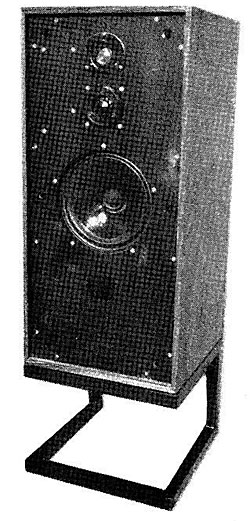The DIY Chronicles, Part Six
E<I>ditor's Note: This is Part Six of a six-part series from reader Hervé Delétraz of Switzerland, who has chronicled the development of his DIY (do-it-yourself) audio amplifier.
E<I>ditor's Note: This is Part Six of a six-part series from reader Hervé Delétraz of Switzerland, who has chronicled the development of his DIY (do-it-yourself) audio amplifier.
Every once in a while, John Atkinson comes across a speaker that redefines the boundaries of what is possible with the moving-coil loudspeaker approach established 60 years ago by Rice and Kellogg. JA feels that the <A HREF="http://www.stereophile.com//loudspeakerreviews/272/">B&W John Bowers Silver Signature loudspeaker</A> is just such a product, and puts it through its paces to reveal its significant virtues and minor faults.
 This smallish loudspeaker system has been getting high ratings in the English audio magazines for some years but was not available to US consumers until recently, when the small firm (literally a Mom'n'Pop enterprise, footnote 1) arranged for US distribution through Audio International.
This smallish loudspeaker system has been getting high ratings in the English audio magazines for some years but was not available to US consumers until recently, when the small firm (literally a Mom'n'Pop enterprise, footnote 1) arranged for US distribution through Audio International.
The Spendor BC-1 is about as unimpressive-looking as any other smallish three-way loudspeaker, of which there are countless hundreds of models being made in the US at present. In fact, we were so ho-hummed by the mundane appearance of this speaker that we found it hard to connect the pair up and give them a listen.
Most people who now listen to tube amplifiers began with a transistor amp, and know from experience that a tube amp of a given measured power output sounds louder than its nominally identical transistorized equivalent. The unofficial consensus is that you need two to four times the transistor power to achieve the same loudness as you would using tubes. In other words, given the (subjectively) undistorted sound level a 25W (footnote 1) tube amplifier can provide, if you want the same loudness from solid-state technology you would have to replace it with at least a 50W transistor amp (footnote 2).
In general, it's still true that you get what you pay for. But sometimes you don't . . . you get more. What audio product has surprised you with its return on investment?
Italian audio journal <I>Fedelta' del Suono</I> (Sound Fidelity) has honored American startup <A HREF="http://www.redrosemusic.com/">Red Rose Music</A> with "Product of the Year" awards for the company's Model 3 preamplifier and Model 2 power amp. The award is especially noteworthy in view of the fact that the monthly publication, based in Terni, Italy, does not normally fête products from new companies.
An unusual tropical rain welcomed the <A HREF="http://www.aes.org/">Audio Engineering Society</A> to its 109th gathering, held at the Los Angeles Convention Center September 22–25. Audiophiles may breathe a collective sigh of relief to learn that the Super Audio Compact Disc is getting a big push, not only from corporate parents Sony/Philips but from studio-equipment makers, consumer-electronics companies, and—perhaps most important—music labels.
Software giant <A HREF="http://www.microsoft.com/">Microsoft Corporation</A> has acquired <A HREF="http://www.hdcd.com/">Pacific Microsonics, Inc.</A> (PMI), developer of High Definition Compatible Digital (HDCD) technology. The deal was announced in a joint press release issued September 18. Financial details were not disclosed.
E<I>ditor's Note: This is Part Five of a six-part series from reader Hervé Delétraz of Switzerland, who is chronicling the development of his DIY (do-it-yourself) audio amplifier. Part One of the series is <A HREF="http://www.stereophile.com/news/10825/">here</A>, Part Two is <A HREF="http://www.stereophile.com/news/10832/">here</A>, Part Three is <A HREF="http://www.stereophile.com/news/10839/">here</A>, and Part Four is <A HREF="http://www.stereophile.com/news/10844/">here</A>.</I>
Choice is good, or so would go the common wisdom. But as John Atkinson points out in "<A HREF="http://www.stereophile.com//asweseeit/270/">The Crazy You Get from So Much Choice</A>," when applied to diapers and DVD-Audio, choice can quickly develop into a nightmare in which comsumers simply walk away from the shelves, unable to make a decision. Will DVD-Audio suffer such a fate?